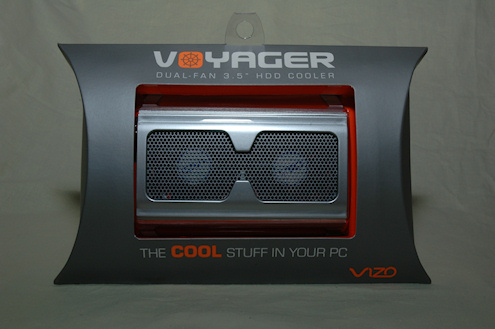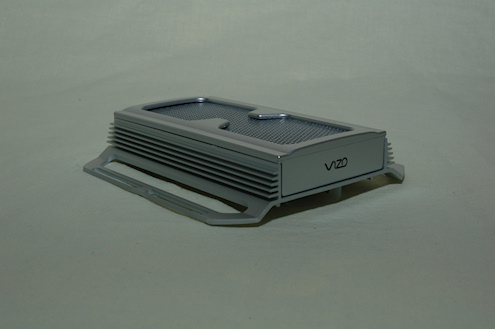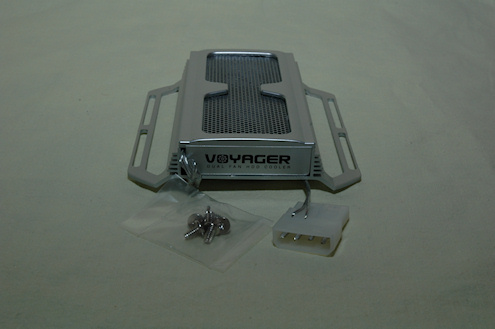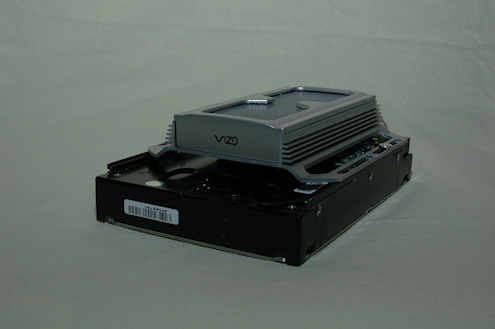Vizo Voyager & Propeller
Today we are going to take a look at two cooling products from Vizo, a company that provides us with cooling products, external hard disk enclosures and more.
We are today taking a look at the Voyager which is a hard disk cooler that is mounted directly onto the drive and also the Propeller which is a dual-fan slot cooler.
First out is the Voyager.
Voyager comes in a gray/silver package with a small window, which can be seen on the photo. There is about as much on the inside as you can see from the outside, except a few screws.
This product is meant to be mounted directly on the underside of your disk drive and draws air through the cooler with two 40mm fans, onto the circuit board of your drive. This is probably one of the best ways to cool your drive and extend the lifespan of it.
A disk drive spins a few turns before it dies, if you check out the manufacturer’s website they often post information about MTBF or “Mean time between failures”. This is the expected lifetime for your drive and is usually a quite high number.
To achieve something near this number you must treat your drive like a royalty or well at least run it in a maximum room temperature of around 20-25°C. Together with good cooling in your computer case you should have a drive temperature around 35°C.
If you run your disk with a temperature around 50°C or higher you lower the MTBF value and will have a failing disk sooner than if you keep your drive cool. Therefore you should have good cooling in your computer case, but you could also apply a cooler like the Voyager.
The Voyager is made out of aluminum where you fasten the screws and also up around the edges of the fans with small fins to help get the heat away. On top of the fans is the cover, which is made out of plastic. To connect the fans to power you use a standard 4pin molex.
This connector is also a connect-through type, which means you can connect it directly to your disk drives power connector and then connect the 4pin molex into the Voyager connector, perfect solution for our old PATA drives and also many of our newer SATA drives.
But there are a few new SATA drives that don’t offer the 4pin molex connector, so in that case you need two power cables, one for the disk drive and one for the Voyager.
As the Voyager comes without a fan speed cable we can’t measure the speed of the fans. But for the wonderful quietness of these two fans, they are actually blowing quite well. By Vizo these fans should run at around 4000 rpm.
We will take a look on the performance results on our third page in this review.

Christopher Fredriksson






































































































































![[H]ard|OCP, https://www.hardocp.com](https://swemod.com/uploaded/affiliates/hardocp.jpg)
![[M]adshrimps, https://www.madshrimps.be](https://swemod.com/uploaded/affiliates/madshrimps.jpg)
